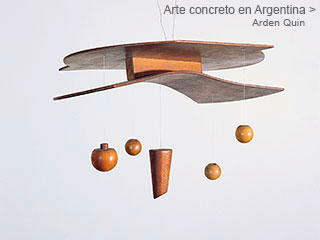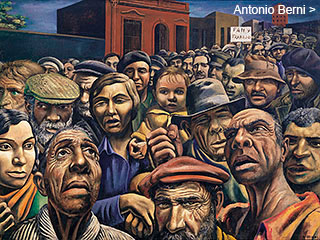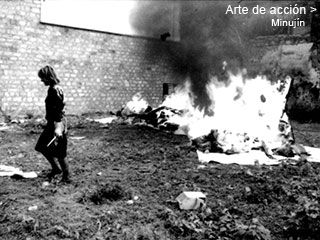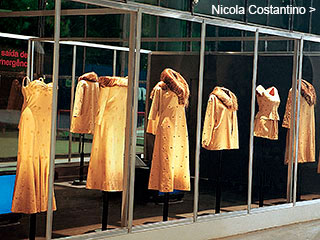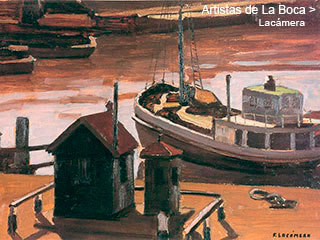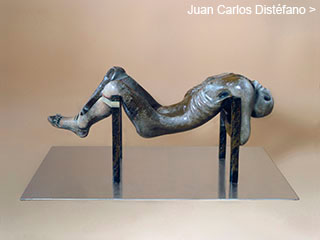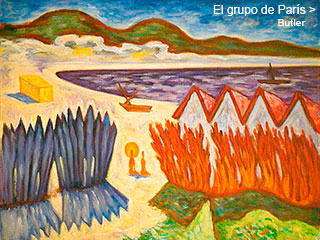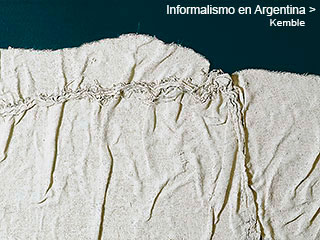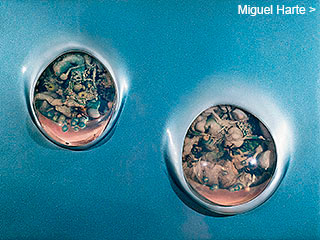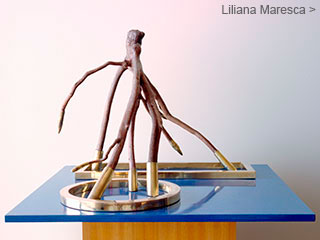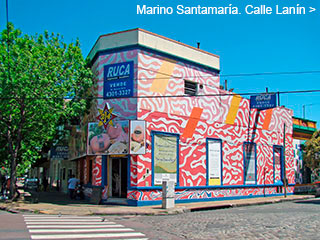Menú
Algunos dossiers
Informalism
in Argentina
in Argentina
by
Jorge López Anaya
August 2003
August 2003
Argentine Informalism incorporated processes which went against the “good taste” of the local practices. Based on the existential poetry of the time, through spontaneous gestures and the use of discarded material, it violated the limits of the traditional artistic genre and opened the road to the concept of the object, the installations and the art of action.
Kemble
you paint?”, or “pity you have used all these disagreeable materials instead of painting with oil”.
Kemble, who had never exhibited his Figurative painting as he considered it mere practice, showed a controversial Informalistic piece for the first time, at the New Art Exhibition in 1958. A year later, at the first exhibit of the Informal Movement, he presented huge pieces of canvas with black symbols traced everywhere over the white background. They looked like giant scriptures from the Far East. They could also have been read as symbols of negation, as if they had been scratched out.
Kemble ventured insistently into the expressive possibilities of whites and blacks. The idea of only using these colors had been suggested by an illustrated article published in the Art d’Aujoud’hui magazine, dedicated to an exhibit of Abstract Japanese Calligraphy that took place in 1954, in Europe and in the US. From then on, he started practicing the tracing of subtle spontaneous hand gestures.
In 1960, during his first individual exhibit at the Peuser Gallery, he presented large pieces of cloth which apart from suggesting oriental writings, reflected his enthusiasm for the austere expressive quality, stripped of a formal and chromatic form. Without a doubt, Kemble’s admiration for the work of Robert Motherwell and Franz Kline seeped through. But the huge black symbols
more


